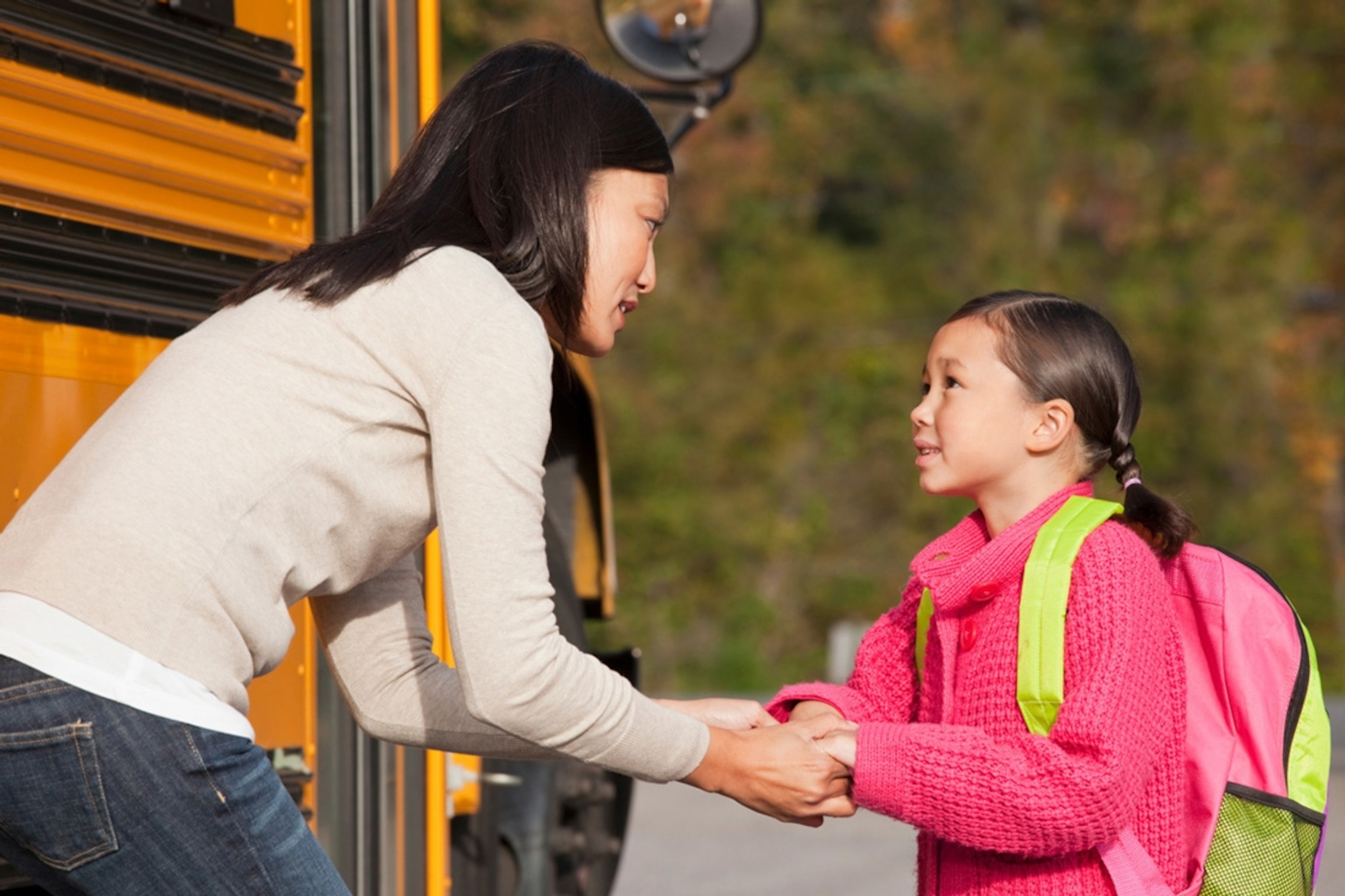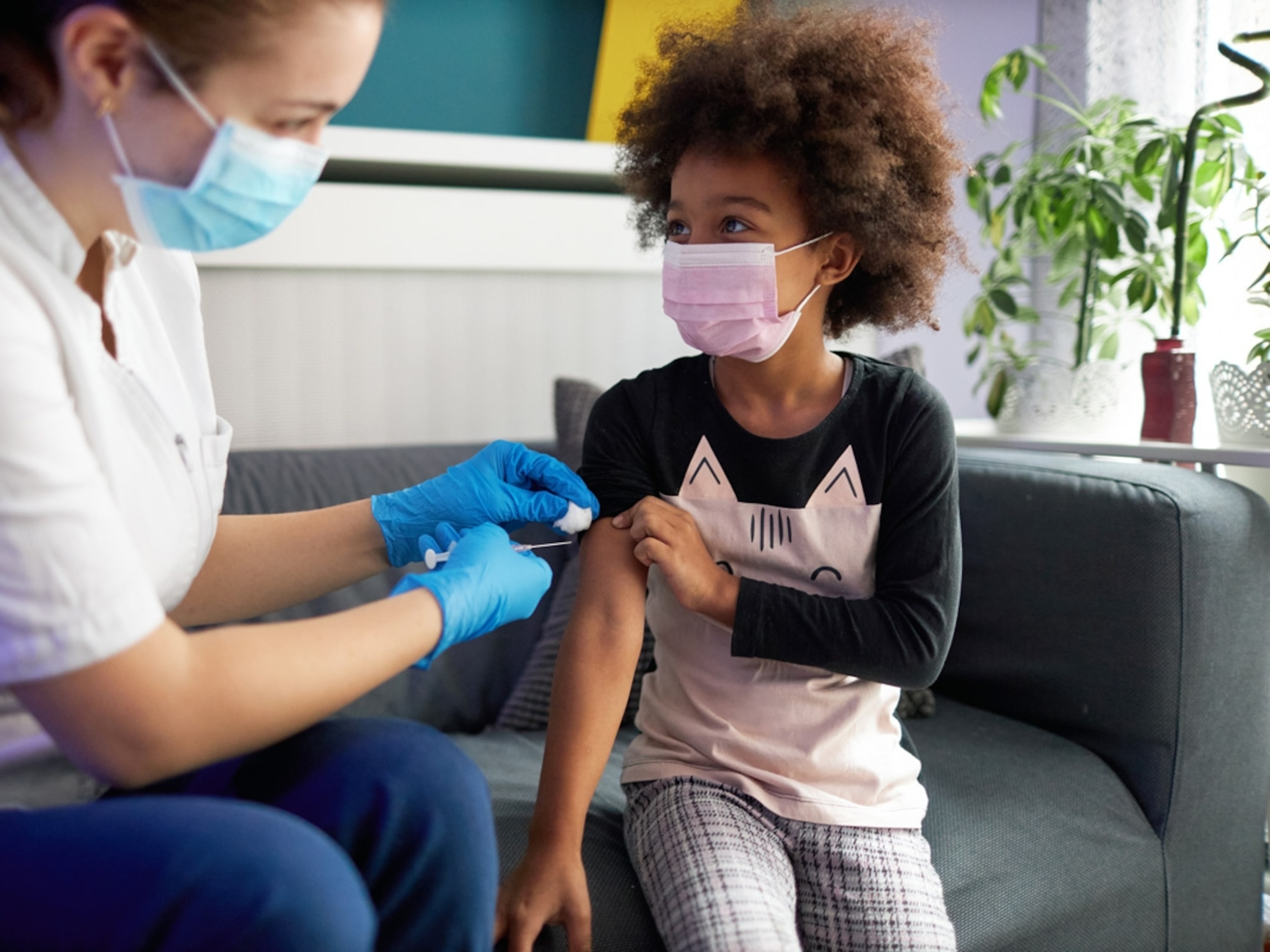
Excited for the return of in-person class? Your kids may not be.
How to manage your child’s transition as schools and camps reopen for face-to-face activity
Like so many parents who’ve struggled to balance working from home with virtual schooling during the pandemic, Debra Perlson-Mishalove and her husband were relieved when their two sons, ages 12 and nine, were invited back into their classrooms in Washington, D.C., for three hours a day, four days a week. But while their older son is thriving, in-person school hasn’t been the same reprieve for their nine-year-old.
“We can’t get him out of the house in the morning. He physically will not go,” she says. “He says, ‘I don’t like school.’ He isn’t feeling as successful.” Coaxing him through the door for any reason is tough these days, Perlson-Mishalove adds. “I sense an anxiety about leaving the house.”
And it’s no surprise. It’s been a heck of a year since families embarked on the longest spring break of all time, and kids have had it drilled into them that they’re staying home to keep everyone safe. Many have been pulled away from friends and activities and held inside a protective cocoon where Mom or Dad are within shouting distance.
Now schools across the country are cracking open their doors thanks to lower case counts, more widely available vaccines, and a new CDC strategy to make it happen “safely and as soon as possible.”
With in-person classes and summer camp on the horizon, families that adjusted to new lives last year need to do it all over again, says Kate Gibson, a clinical psychologist and director of training for Kurtz Psychology in Manhattan. “Kids are resilient but that doesn’t mean they’re going to be happy right away,” she says. Here’s how parents can help prepare kids for the back-to-school transition.
Mitigating separation anxiety
Not since maternity or paternity leave have parents spent so much uninterrupted time with their kids, says Jill Ehrenreich-May, director of the University of Miami’s child and adolescent mood and anxiety treatment program. Abruptly ending that constant togetherness can be jarring.
“People talk about pandemic pets and how their expectations of humans are off,” she says. Children aren’t all that different, especially those who can no longer remember going to daycare or preschool.
Up until about first grade—even in the absence of a pandemic—it’s typical for children to be clingy with their parents, she says. It’s how young children cope with not yet being able to express their concerns. As they develop cognitively, their communication skills improve, they understand situations more logically, and they’re better able to adjust to different caregivers, she explains.
If your elementary-age child has trouble leaving your side this year, Ehrenreich-May says to keep in mind that “it’s a normal transition, just delayed.” And, as with most fears, separation anxiety usually gets better the more kids face whatever is bothering them.
Anxious children might try to avoid the thing that’s making them uncomfortable, Gibson explains. A parent’s job is to show them that they can handle this new situation by providing a supportive push. That means offering encouraging words (“I know this is hard. I love you very much, and I know you can do this.”) and not being deterred by sobs and stomping feet, she says. Tantrums will only lead to more tantrums if that behavior is effective.
“Making it to school or camp is the best way for the child to see that they can indeed handle the new situation, and maybe even have fun,” she adds.
It can be tough for a parent to follow through with separation, but the child should understand that it will happen, says Paula Fite, a clinical child psychology professor at the University of Kansas. Prep kids at home by practicing breathing exercises and empowering mantras, and then remind them of these coping strategies when they leave home.
Let them know when you’ll be back, and be quick and intentional when it’s time to go. “Don’t drag it out,” she says. And if a child is showing signs of distress, let school staff take the lead, says Ehrenreich-May. Kids will soon learn first-hand that they’ll be well taken care of until you return.
Families with kids who are still at home full-time can practice separations, Fite says. Find situations where your kids will feel comfortable and safe, even when you’re not by their side. Maybe you sit outside the house for 30 minutes while letting them play inside independently, or have a friend or family watch them. “Small doses of that helps,” Fite says, noting that the hybrid schedules many schools are starting may ease the transition, too.
While kids tend to grow out of separation anxiety, it can develop into other forms of anxiety if left unchecked, Ehrenreich-May says. She suggests monitoring several key indicators that might signal professional help is needed:
• Frequency of distress: Is it every drop-off or just some?
• Persistence of distress: Is fear lessening over time or becoming worse?
• Intensity of distress: Is the child having full-on meltdowns?
• Impairment: Is the anxiety getting in the way of school, friends, etc.?
Helping kids feel safe at school
To help prepare her 10-year-old son for his recent return to the classroom, Caitlin Rutherford got permission to snap some photos of what he would encounter at school, starting with the temperature-taking stations at the entrance and continuing along the path to his classroom.
“He thinks big thoughts and has big worries,” says Rutherford, whose military family has had to learn to handle frequent moves and new schools. “This way, I could walk him through the routine.”
Like Rutherford’s son, many children will be returning to schools with new safety protocols in place that make their school environment feel very different from what they left a year ago. Kindergarteners and students starting at an entirely new school building may feel even more trepidatious, Gibson warns. “To set them up for success, they need to know what to expect,” she says.
Encourage them to ask questions, and be honest while aiming to put a positive spin on the situation. “They look to us to know how to react. If you’re super anxious, then everybody’s on edge,” Fite says. “If we make up our minds that this isn’t going to work, kids will pick up on that.”
Some kids will undoubtedly wonder how safe it really is to go back, especially after a year of being told repeatedly that they’re not in school because of the risk of transmitting the virus.
It’s confusing to tell a kid, “We can’t see your cousins in their house, but we can still go to school with 20 other people in the room,” Ehrenreich-May says. “What they need to know is that scientists say classrooms are usually safe from COVID as long as you follow the rules.”
Coping with transitions
The bottom line is that change can produce anxiety in kids. “Predictability is anchoring,” says Gibson, who recommends stabilizing eating schedules, setting bedtimes, and establishing a routine. Plus, a good night’s sleep and a balanced diet help everyone function better. Depending on your kids’ needs, carving out time for meditation or physical activity can provide a boost too, she adds.
Fite likens the transition that younger children are going through to the transition to middle school, which involves a completely new environment and different social and academic expectations. Her research has shown that relationships with parents, peers, and teachers are critical for supporting middle schoolers and recommends strengthening social ties for younger kids transition back to in-person school.
“Make sure lines of communication are open all around,” she says, encouraging conversation among families, as well as reaching out to school staff and classmates.
Keep an eye out for signs that kids might need extra support, Fite adds. Tantrums and tears are hard to ignore, but subtler indications like increased irritability, sleep issues, or appetite loss can also point to adjustment difficulties. Children are often more tired at the beginning of a school year because of the schedule change. But fatigue that persists beyond a few weeks may be a symptom of withdrawal or depression, she explains.
Over the next few weeks and months, parents need to be proactive without panicking, says Ehrenreich-May, who’s watched her two kids go back to school. In many situations, moms and dads will likely find that their children are doing better than the adults they know, she says. “They’re kids and young and able to handle it.”



